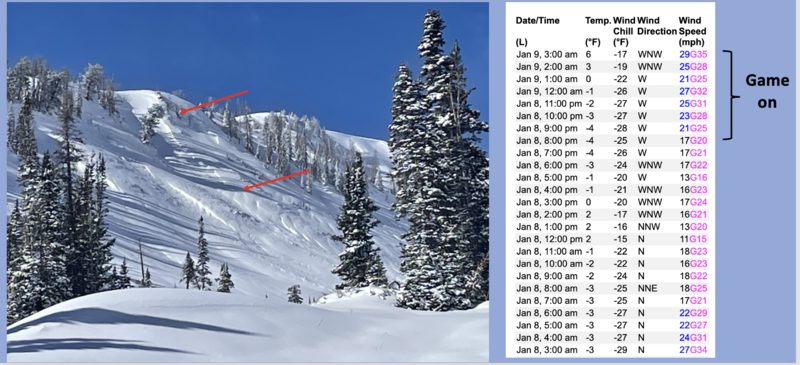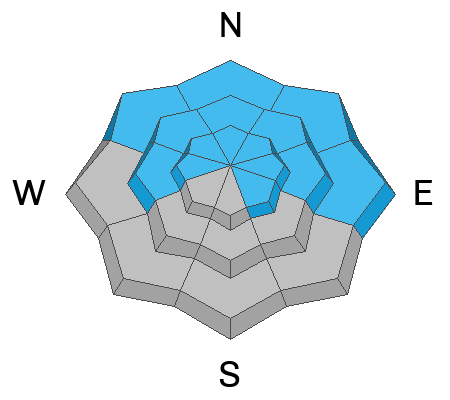Forecast for the Uintas Area Mountains

Issued by Craig Gordon on
Tuesday morning, January 9, 2024
Tuesday morning, January 9, 2024
Heads up... the snowpack is at a tipping point, it's getting real, it's gonna get sketchy, and the storm cycle is just barely off to the races-
Winds ramped up overnight, changing the landscape and bumping avy danger to CONSIDERABLE. Human triggered avalanches are LIKELY, particularly in steep, leeward terrain at and above treeline, and especially in the wind zone on slopes with an easterly component to its aspect. Any avalanche triggered has the potential to break deeper and wider than you might expect... it'll pack a powerful punch.
MODERATE avalanche danger exists near the lower trailhead elevations where fresh wind drifts react to our additional weight and human triggered avalanches are POSSIBLE on steep, wind drifted slopes facing the north half of the compass.
Low elevation terrain below treeline facing the south half of the compass offers LOW avalanche danger.
It's still lean out there and the new snow camouflages equipment trashing rocks and stumps barely lurking underneath a thin coat of white paint.

Low
Moderate
Considerable
High
Extreme
Learn how to read the forecast here














